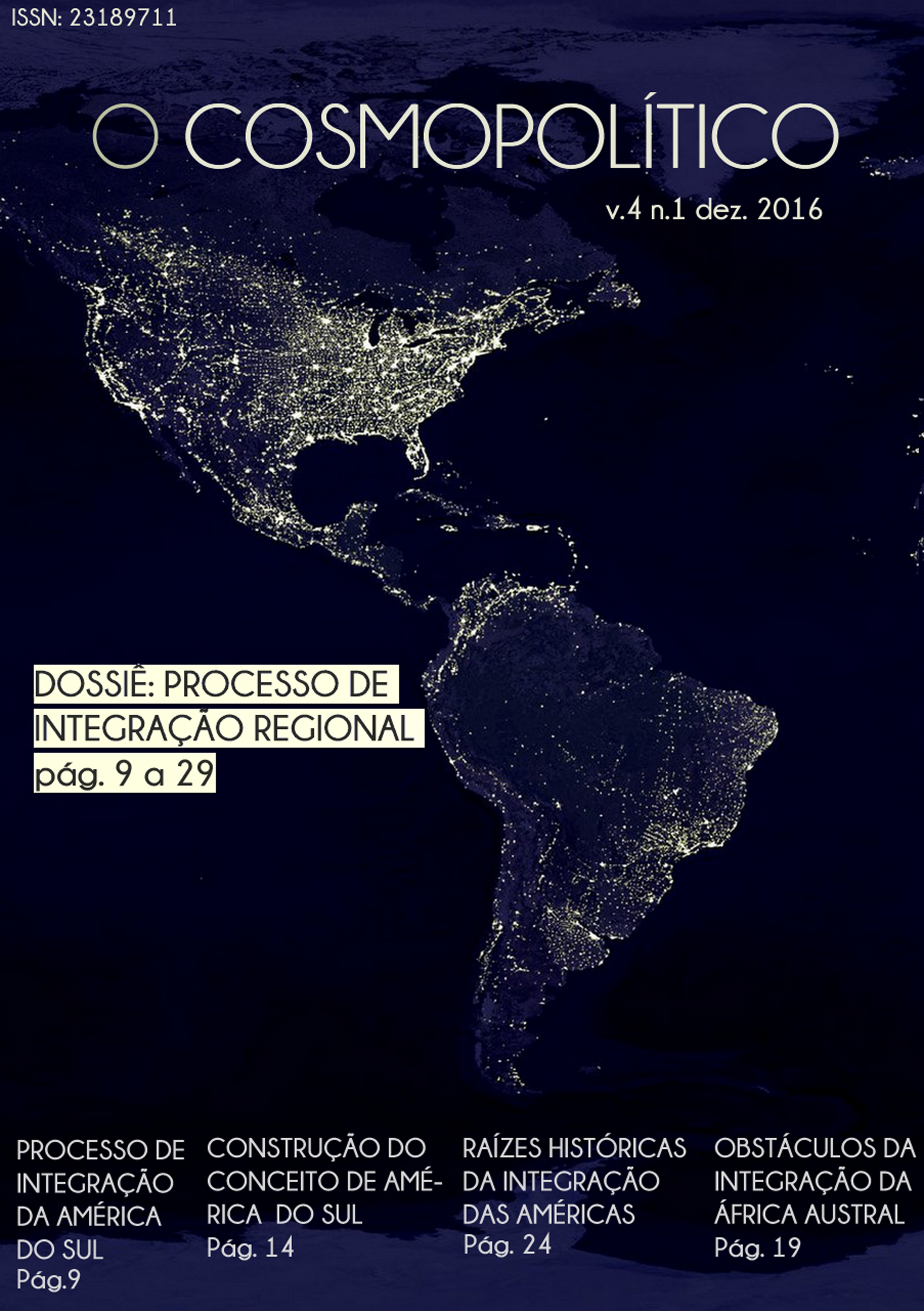MORE THAN JUST ANOTHER BRICK IN THE WALL:
OS JOVENS COMO FORÇA MOTRIZ DO PROCESSO DE PEACEBUILDING
Mots-clés :
Peacebuilding, Juventude, Paz, ConflitosRésumé
Segundo Galtung (1969), os principais afetados pelas diferentes formas de violência – seja ela direta, cultural ou estrutural – e também amortecedores de mudança social são os jovens. Vivenciar traumas como a perca de familiares e amigos, o risco constante à própria vida e o enfraquecimento da sensação de pertencimento a uma rede social, são fatores que podem afetar diretamente a vida daqueles que presenciaram um conflito de grande magnitude.
Téléchargements
Références
ABOYOMI, Francis. The Role of Youth In Peace Building. Disponível em: <http://respectrefugees.org/ezine/2004/ezine20040528_youth.shtml>. Acesso em 15/04/2016.
BEEHNER, Lionel (2007). The Effects of ‘Youth Bulge’ on Civil Conflicts. Disponível em < http://www.cfr.org/world/effects-youth-bulge-civilconflicts/p13093>. Acesso em 15/04/2016.
BENNET, R.; KARKI, S.; NEPAL, N. (2012) Youth and Peacebuilding in Nepal: The current context and recommendations. Disponível em: <https://www.sfcg.org/wp-content/uploads/2012/01/N E P _ C A _ Jan 1 2 _ Yout h - an d - Pe a c e - building.pdf>. Acesso em 20/04/2016.
CAVALCANTE, Fernando (2010). As origens conceituais da construção da paz das Nações Unidas.
COIMBRA, C.; BOCCO, F.; NASCIMENTO, M. (2005). Subvertendo o conceito de adolescência. Arquivos Brasileiros de Psicologia, v. 57, n. 1 (pp. 2-11).
DAMBACH, Chic. What is Peacebuilding? Disponível em: <http://www.allianceforpeacebuilding.org/?page=aboutpeacebuilding>. Acesso em 12/04/2016.
DE CONING, Cedric. Understanding Peacebuilding as Essentially Local. Disponível em: <http://www.stabilityjournal.org/articles/10.5334/sta.as/>. Acesso em 30/04/2016.
DEL FELICE, C.; WISLER, A. The Unexplored Power and Potential of Youth as Peace-builders. Disponível em: <http://www.creducation.org/resources/Power_and_Potential_of_Youth_as_Peace-Builders.pdf>. Acesso em: 12/04/2016.
GALTUNG, Johan (1969). Violence, peace and peace research. Journal of Peace Research. Oslo, v. 6, n. 3, (p. 167-191).
General Assembly: Security Council, 1992. Disponível em: <http://www.un.org/ga/search/view_doc.asp?symbol=A/47/277>. Acesso em 20/04/2016.
GOLDSTONE, Jack A. (1991) Revolution and Rebellion in the Early Modern World. Berkeley, CA: University of California Press.
LEDERACH, John Paul. (2005) The Moral Imagination.
MCEVOY, Siobhán. (2001) Youth as Social and Political Agents: Issues in Post-Settlement. Peace Building, p. 25. Disponível em: <https://www.ciaonet.org/attachments/10915/uploads>. Acesso em: 22/04/2016.
ODA, Hiroshi. Peacebuilding from Below: Theoretical and Methodological Considerations toward an Anthropological Studyon Peace. Disponível em: <http://eprints.lib.hokudai.ac.jp/dspace/bitstream/2115/20475/1/ODA.pdf>. Acesso em 30/04/2016.
Security Council: Resolution 2250 (2015). Disponível em: < http://www.un.org/en/sc/ctc/docs/2015/N1541306_EN.pdf>. Acesso em: 12/04/2016.
UN Security Council Adopts Historic Resolution on Youth, Peace and Security. Disponível em: < http://www.un.org/youthenvoy/2015/12/un-security-council-adopts-historic-resolution-on-youth-peace-and-security/>. Acesso em29/04/2016.
United Nations Peacekeeping Operations: Principles and Guidelines, 2008.
United States Institute of Peace: Youth and Peacebuilding. Disponível em: <http://www.buildingpeace.org/think-global-conflict/issues/youth-and-peacebuilding>. Acesso em: 22/04/2016.
Young People’s Participation in Peacebulding: A practice note, 2016.
Téléchargements
Publiée
Numéro
Rubrique
Licence
(c) Copyright O Cosmopolítico 2017

Ce travail est disponible sous la licence Creative Commons Attribution 4.0 International .



